AI is also playing a role in detecting the ripples in spacetime called gravitational waves.
The Deep Loop Shapingtechnology, developed in collaboration with Google DeepMind, the LIGO (Laser Interferometer Gravitational-Wave Observatory) team, and GSSI (Gran Sasso Science Institute), has taken the low-frequency noise reductioncapability in gravitational wave detection to new heights.
This research has now been published in Science.
Professors Rainer Weiss, Kip Stephen Thorne, and Barry Clark Barish from the LIGO team previously won the Nobel Prize in Physics in 2017for their work with the LIGO detector and gravitational wave observations.
However, the field of gravitational wave detection has been stuck on the low-frequency noise problem for many years.
With the introduction of AI, the 10-30Hz frequency rangenoise intensity has been reduced to 1/30of that achieved by traditional methods, with some sub-frequencies even compressed to 1/100of the original level, surpassing the design goals set by quantum limits.
First, it is important to clarify that detecting gravitational waves is a top challenge in the field of astronomy.
Gravitational waves are spacetime disturbances(or spacetime ripples) produced by collisions of black holes and neutron stars, and the signals are extremely weak.
For example, even when two black holes merge, the resulting spacetime deformation that reaches Earth is much smaller than an atomic nucleus.
To capture these minuscule signals, LIGO was specifically built with a 2.5-mile (approximately 4 kilometers) long laser interferometer.
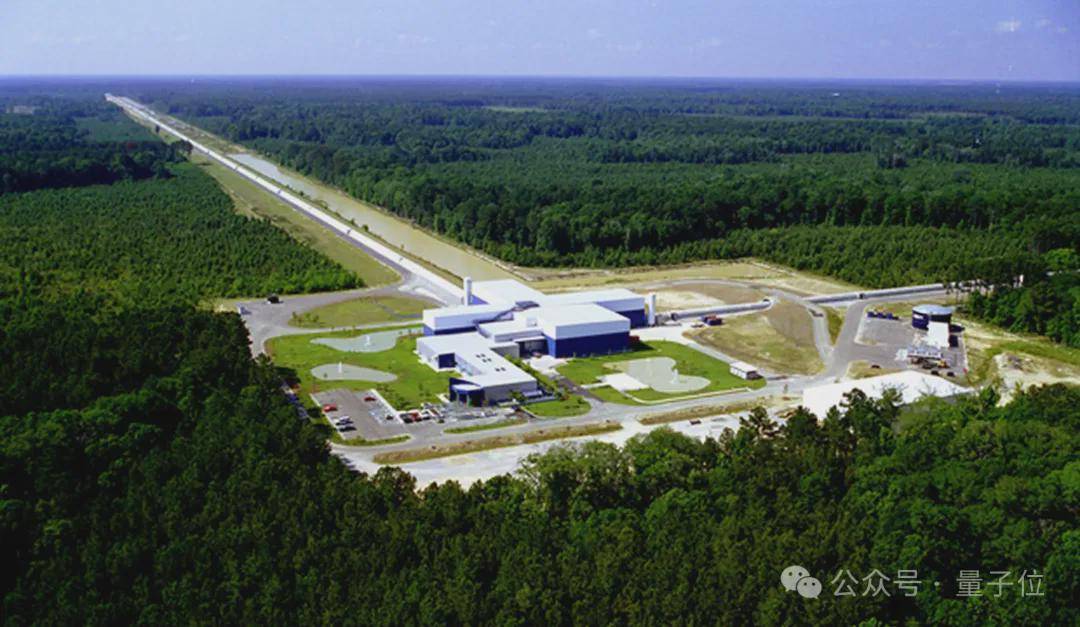
△ Image source: Google DeepMind (same below)
Initially, LIGO is shaped like a large letter L, with two vacuum tubes at either end holding ultra-smooth mirrors. It splits a laser beam in half, sending each half into the two tubes. When the laser hits the mirrors, it reflects back, and the two reflected beams recombine at a single detector.
Under normal circumstances, both tubes are the same length, and the beams travel the same distance, thus reflecting at the same time, allowing the two beams to “cancel” each other out (think of peaks aligning with peaks and valleys with valleys), meaning the detector sees no light signal.
However, if a gravitational wave passes by, it stretches and compresses spacetime, possibly elongating one tube while compressing the other. This means the distances of the two tubes are no longer the same, causing the reflected light not to perfectly cancel out, enabling the detector to see a signal with varying brightness.
From this signal, scientists can deduce whether a gravitational wave has passed through.
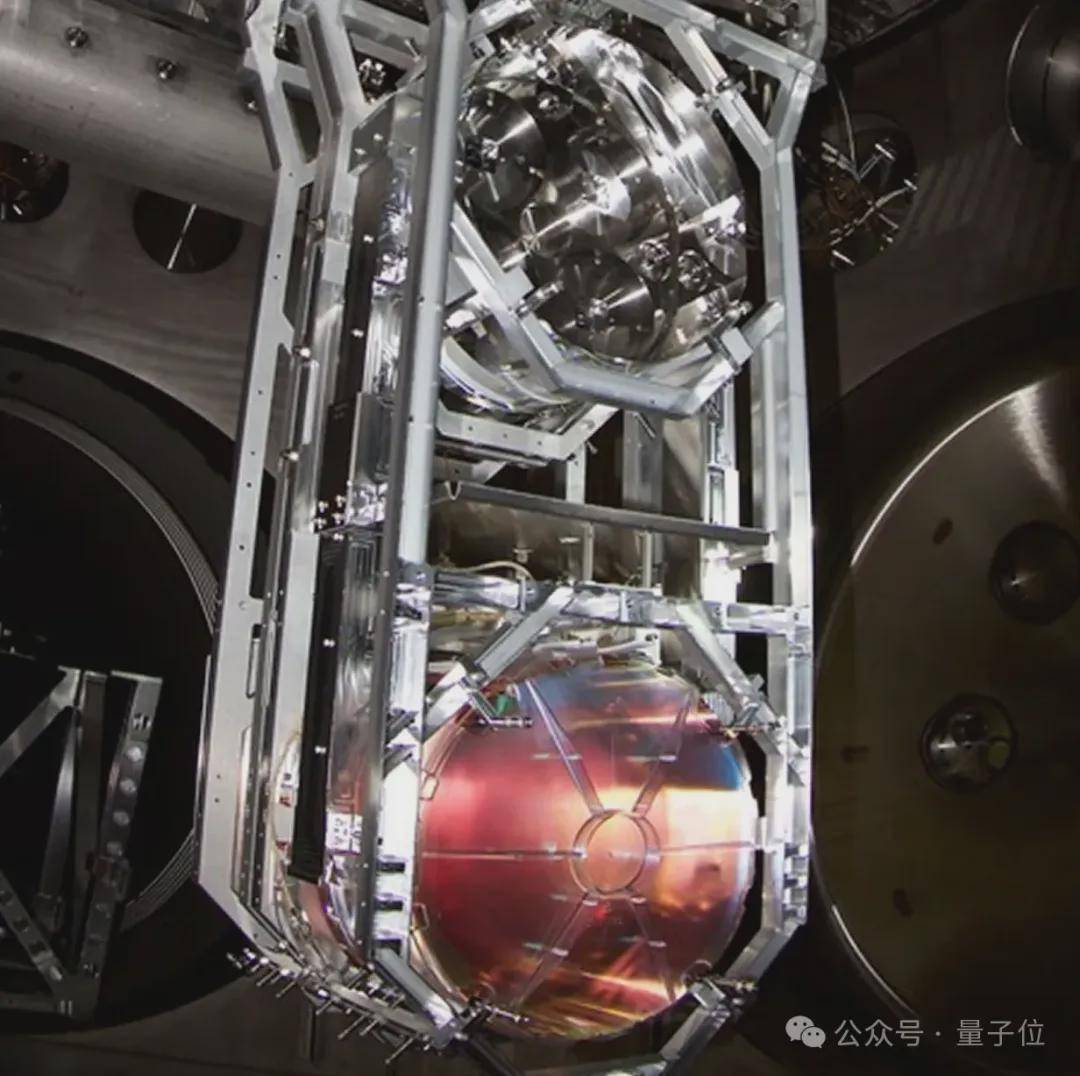
However, the detection effectiveness has long been limited by noise interference, particularly in the 10-30Hzlow-frequency range.
This low-frequency range is irreplaceable for astronomical research. It is key for observing the merger of medium-mass black holes (hundreds to thousands of times the mass of the Sun), the long-term orbital processes of double black holes, and providing early warnings for neutron star mergers.
Yet, traditional noise reduction methods had already hit a ceiling in the low-frequency range. Scientists had previously tried optimizing detector structures and shielding against environmental interference, but they could never reduce low-frequency noise to a level that would not affect signal identification, a bottleneck that has troubled the field for many years.
Now, Deep Loop Shaping has achieved a breakthrough through AI technology
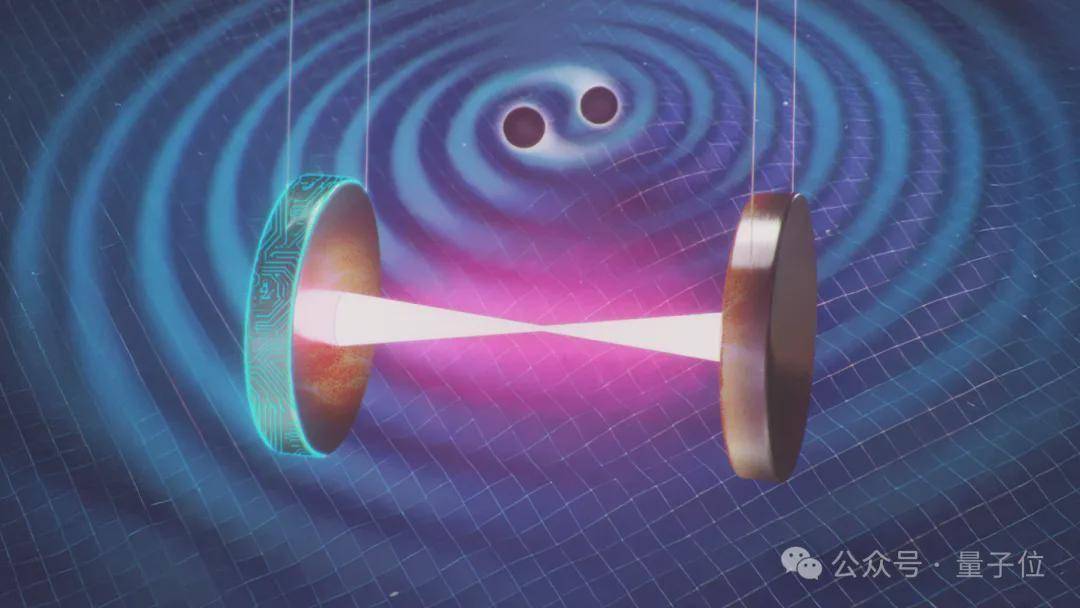
The core of Deep Loop Shaping technology does not directly seek out gravitational waves but instead uses reinforcement learning methods to manage noise, reconstructing LIGO’s feedback control system.
The research team first created a digital twin of LIGO, simulating various interference factors such as earthquakes, ocean waves, and temperature drift, which represent noise. By using a reward mechanism, the AI learned through billions of iterations, training algorithms that can optimize the detector’s feedback loop.
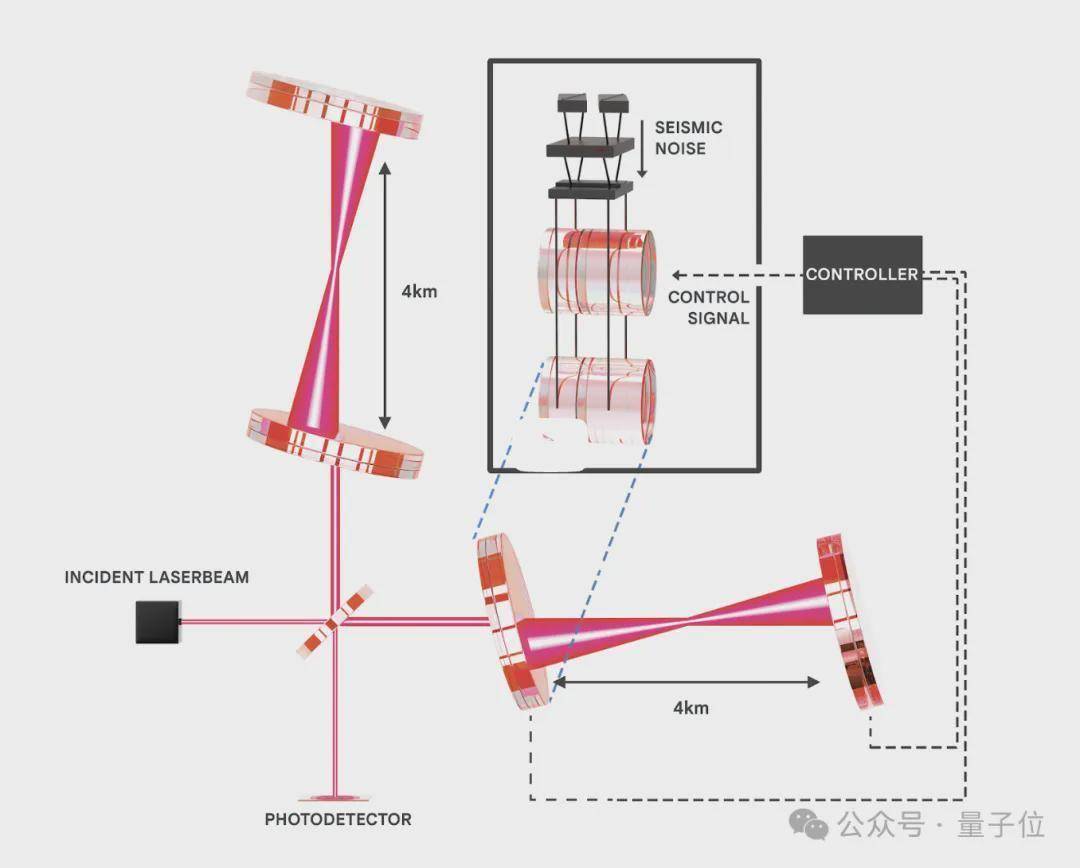
Previously, LIGO used linear control methods for noise reduction, which could easily amplify noise in the low-frequency range. In contrast, Deep Loop Shaping employs deep neural networks to directly process the vast data streams collected by the detector, extracting the optimal paths for gravitational wave features from the raw sensor signals, preventing the controller itself from becoming a noise source.
Simultaneously, the system utilizes a recurrent neural network architecture that can dynamically identify microsecond-level environmental interferences and quickly make adjustments, further optimizing the output of thousands of sensors within the vacuum tubes to reduce background noise.
Using Deep Loop Shaping technology, at the LIGO Livingston Observatory and the California Institute of Technology’s 40-meter prototype, AI has directly compressed the control noise in the 10-30Hz range to 1/30of that achieved by traditional methods, with some sub-frequencies even reduced to 1/100, for the first time bringing this range’s control noise below quantum noise, breaking through the design goals inspired by quantum limits.
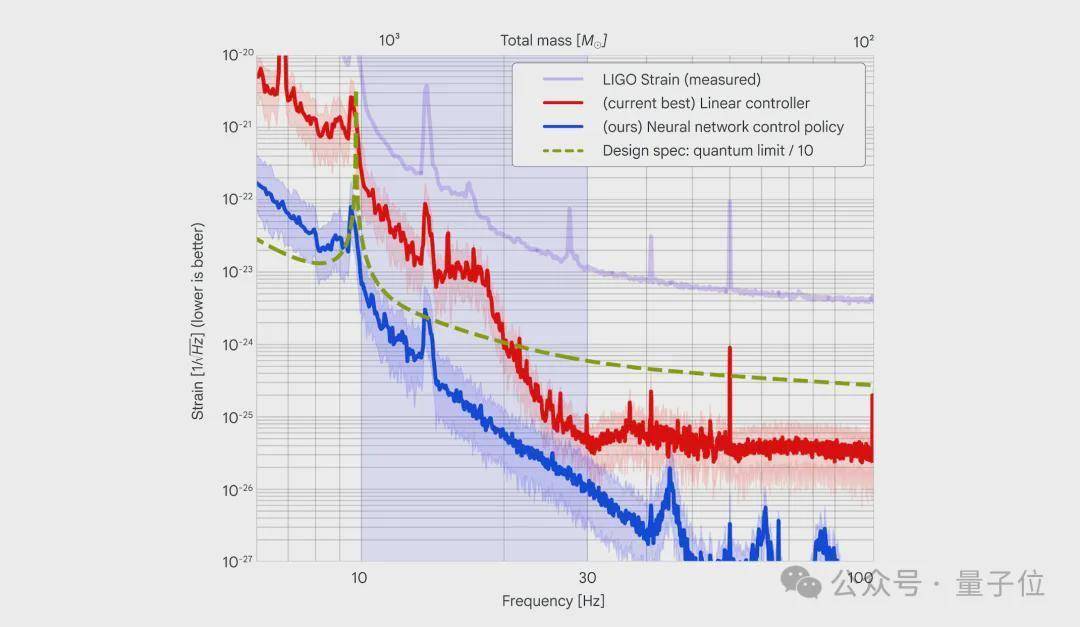
Moreover, it has expanded the effective observational range of the detector, extending LIGO’s effective observation distance from 130 million light-years to 170 million light-years, increasing the observable cosmic volume by 70%, which means a significant increase in the number of detectable gravitational wave events each year.
For example, during the GW240312 black hole collision event in March 2024, Deep Loop Shaping technology successfully identified weak signals with amplitudes 15%lower than traditional thresholds.
Co-author of the study, Professor Jan Harms, stated that the new technology could also provide earlier warnings for imminent cosmic collisions.
“You can provide a pre-warning before the merger, allowing people to know that two neutron stars will merge in one minute,” he said. “Then, if you have the right number of detectors online, you could even point to a specific area in the sky and tell them, ‘Look there, wait for it.'”
One More Thing
On September 14, 2015, LIGO successfully detected gravitational waves for the first time, confirming Einstein’s prediction made 100 years ago based on general relativity: that massive celestial bodies can compress and stretch spacetime due to accelerated motion.
The three outstanding contributors to the LIGO project, Professors Rainer Weiss, Kip Stephen Thorne, and Barry Clark Barish, were awarded the Nobel Prize in Physics in 2017 for this achievement.
△ From left to right: Rainer Weiss, Kip Stephen Thorne, Barry Clark Barish
However, unexpectedly, Professor Weiss, who made such significant contributions, was expelled from school during his student years for dating.
Born in Germany in 1932, Weiss entered MIT (Massachusetts Institute of Technology) to study electrical engineering in 1950.
During the summer of his sophomore year at MIT, Weiss’s long-distance girlfriend broke up with him, prompting him to leave Cambridge and travel to Chicago to save the relationship.
When he returned to MIT a few months later, he discovered he had been expelled due to excessive absences.
Later, without completing his studies, Weiss found a technician job in physicist Jerrold Zacharias’s research group.
Encouraged by Professor Zacharias, Weiss returned to MIT to complete his education, earning a bachelor’s degree in 1955 and a Ph.D. in 1962 in Professor Zacharias’s group. He then went to Princeton University for a postdoctoral position, researching whether gravitational waves could be detected from seismic signals.
Later, Weiss led the LIGO team, which observed gravitational waves on September 14, 2015, officially announcing it in February 2016 and winning the Nobel Prize in 2017.
But just a few days before the upcoming tenth anniversary of the first detection of gravitational waves, on August 25, 2025, the oldest of the Nobel laureates, Professor Weiss, passed away at the age of 93.
When the first gravitational waves were detected, he remarked:
“With gravitational waves, you have a new way of observing the universe. You can see everything that nature has to offer. So the question now is: What do you want to discover?”
[1]https://www.geekwire.com/2025/ligo-google-ai-gravitational-waves/
[2]https://www.science.org/doi/10.1126/science.adw1291
[3]https://deepmind.google/discover/blog/using-ai-to-perceive-the-universe-in-greater-depth/
[4]https://www.nytimes.com/2025/08/26/science/rainer-weiss-dead.html返回搜狐,查看更多
